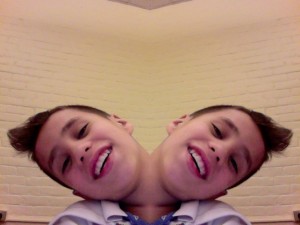Manny did a really great job with this project. He had a very clear vision of what he wanted to do and realized it largely by himself. Kudos to Manny! Enjoy!
Author Archives: hetran
One Way to Stop Bullying
Manny and Henry Update
Today, Manny finished the essay portion of his tribute to Michael Jordan. He and Henry revised the written piece together and Manny’s excited to present it to the whole group. We also finished our tribute video! We worked on fine-tuning the clips so that they’d flow well with the background music. We must say, it looks pretty good 🙂
Reading Response to Ray
Manny and Henry’s Update 2/28
This whole time in digital storytelling we have been changing our ideas but, i think today we finally have the tools to finish our project. So we found a way to import YouTube video onto the the desktop (after a whole lot of trial and error). I think that from now on, we’ll be able to actually work on the project instead of trying to learn how to do everything. We plan on continuing our original project and will compile videos from YouTube into a commercial for Michael Jordan sneakers in the next few weeks.
Today, Manny also worked on a written piece that will accompany his digital project. He’s decided to write a short piece about Michael Jordan’s rise to fame and will trace his trajectory from underdog to superstar athlete. He is still working on a rough draft, but it looks very promising. We just have to figure out how to tie this paper into the digital project.
Bringing Non-Academic Literacies into the Classroom
Day 2 of Digital Project
Today we revised our previous ideas and thought of some other topics. We have decided to work on a different type of commercial. Instead of creating a commercial of my own shoe brand, I wanted to use some video clips of the one and only Michael Jordan to market his shoe brand.
Heres one clip we think of using;
Two Birds, One Stone
Hello, My names is Emmanuel but, everyone calls me manny.
I was born in Poughkeepsie, New York on 3/23/00 which makes me 11 years old. I have two siblings. I have a 17 year old brother who is named Sebastian, and a 14 year old sister named Isabella. My favorite thing to do is to watch and play all kinds of sports except for the one that I don’t think should be considered a sport (golf). My favorite teams are Miami Heat (basketball),NY Jets (football), NY Yankees (baseball), and Real Madrid (soccer).
A Little Bit about Henry
This is my super awesome post about me.
My name is Henry and I’m a sophomore at Vassar College. I’m majoring in Urban Studies and Sociology, but am interested in Education and Environmental Studies as well. I’m originally from Anaheim, California and as much as I love Poughkeepsie, it’s always nice to go home to sunny California.
Here’s my first digital story:



